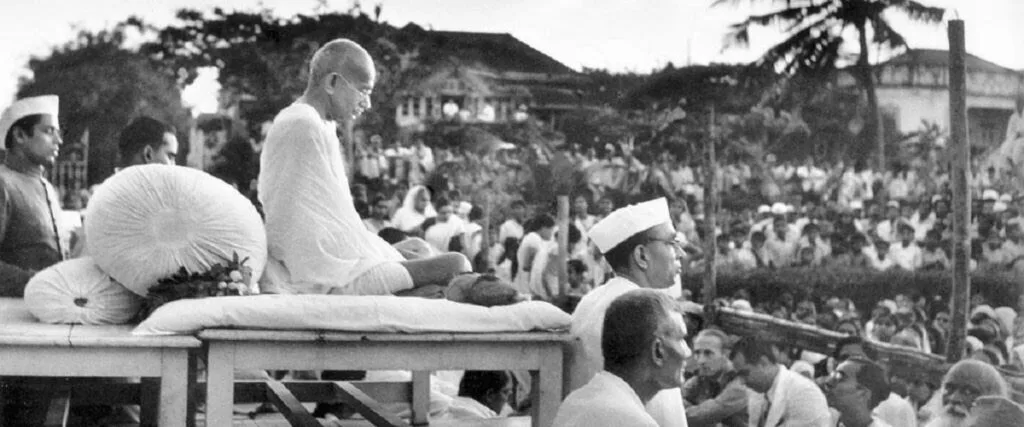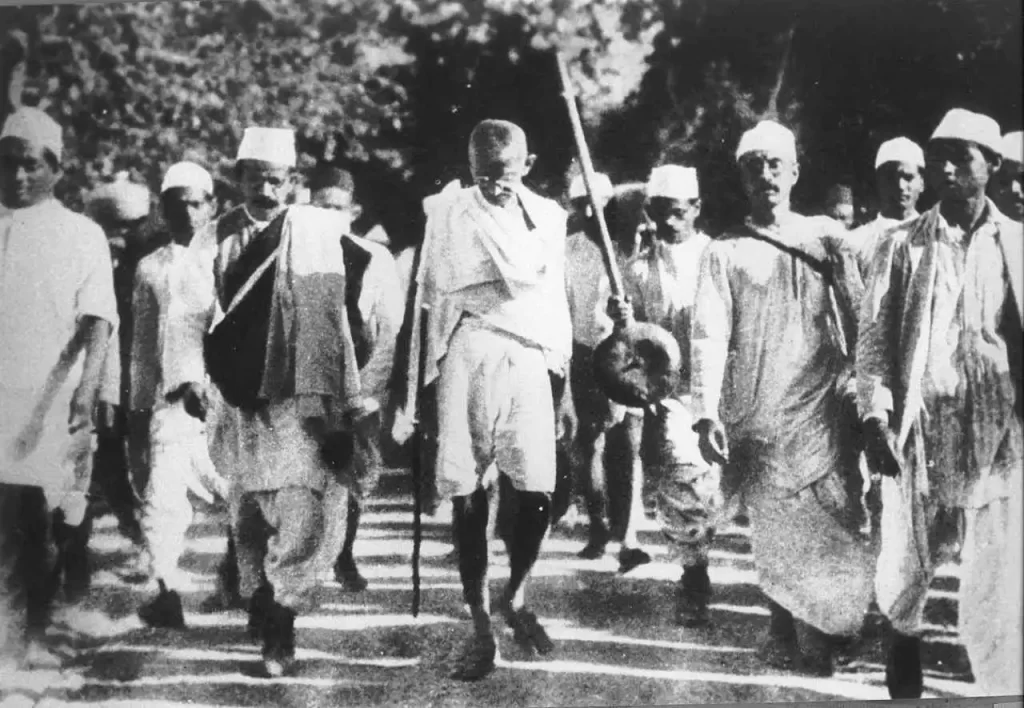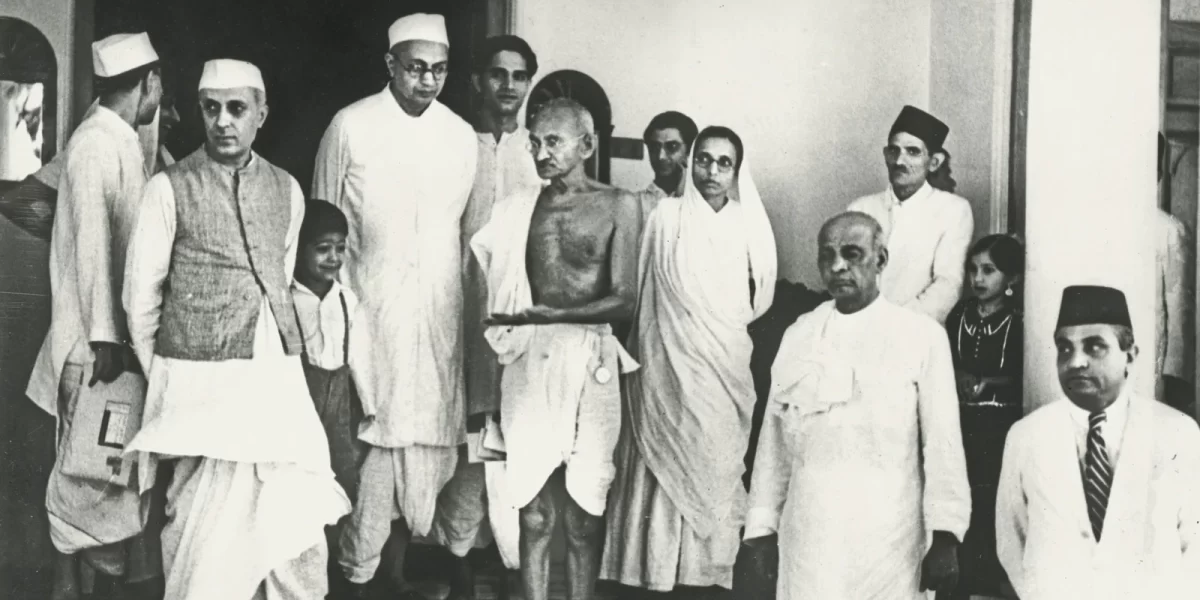Mahatma Gandhi, the revered leader of India’s independence movement, played a pivotal role in the country’s struggle for freedom from British rule. Born as Mohandas Karamchand Gandhi in 1869, he was a man of extraordinary vision, courage, and moral fortitude, who dedicated his life to the cause of Indian independence.
Gandhi’s journey to becoming the ‘Father of the Nation’ was marked by a deep commitment to the principles of nonviolence, truth, and self-sacrifice. From a young age, he was influenced by the teachings of Hindu scriptures, as well as the philosophies of thinkers like Henry David Thoreau and Leo Tolstoy, which instilled in him a strong belief in the power of nonviolent resistance. This belief would later become the cornerstone of the Indian independence movement, shaping its course and inspiring millions of people around the world.
After completing his education in India and England, Gandhi returned to his homeland in 1915, determined to fight for the rights and dignity of the Indian people. He quickly immersed himself in the country’s political and social landscape, organizing and leading various campaigns and movements that challenged the British rule. Through his unwavering commitment to nonviolence, Gandhi was able to galvanize the masses and inspire them to join the struggle for independence, ultimately paving the way for India’s emergence as a free and sovereign nation.
Gandhi’s philosophy of nonviolence and its significance
At the heart of Gandhi’s leadership was his philosophy of nonviolence, known as Satyagraha. This principle of nonviolent civil disobedience was rooted in the belief that truth and moral force could overcome the use of physical force and coercion. Gandhi saw Satyagraha as a powerful tool for social and political change, one that could be used to challenge injustice and oppression without resorting to violence.
The concept of Satyagraha was not merely a tactical approach to the independence struggle; it was a way of life for Gandhi. He believed that true change could only come through self-purification and the cultivation of moral and spiritual strength. By embracing principles such as truth, non-cooperation, and civil disobedience, Gandhi sought to transform not only the political landscape but also the hearts and minds of the people.
The significance of Gandhi’s philosophy of nonviolence cannot be overstated. It challenged the prevailing notion that violence was the only effective means of achieving political and social change. Through his actions and teachings, Gandhi demonstrated that nonviolent resistance could be a powerful force for liberation, inspiring countless individuals and movements around the world to adopt similar approaches. His legacy continues to inspire and guide those who seek to bring about positive change through peaceful means.

Key events and campaigns led by Gandhi during the movement
During the course of the Indian independence movement, Gandhi spearheaded numerous campaigns and events that were instrumental in galvanizing the masses and pushing the British government towards granting India’s independence. Among the most notable of these were the Non-Cooperation Movement, the Civil Disobedience Movement, and the Quit India Movement.
The Non-Cooperation Movement, launched in 1920, was a crucial turning point in the independence struggle. Gandhi called for the widespread withdrawal of Indians from British institutions, such as government offices, courts, and schools, as a way of undermining the colonial administration. Millions of people, from students and professionals to farmers and laborers, heeded the call, effectively crippling the British system from within. This coordinated act of civil disobedience demonstrated the power of the Indian people to challenge the might of the British Empire through nonviolent means.
The Civil Disobedience Movement, which began in 1930, was another landmark event in the independence struggle. Sparked by Gandhi’s famous Salt March, which protested the British monopoly on salt production, the movement saw widespread acts of civil disobedience, including the defiance of unjust laws, the boycott of British goods, and the refusal to pay taxes. The government’s violent crackdown on these peaceful protests only served to further galvanize the Indian people, strengthening their resolve to achieve independence.
Salt March and its impact on the movement
The Salt March, also known as the Dandi March, was a seminal event in the Indian independence movement that captured the world’s attention and dealt a significant blow to the British colonial rule. In 1930, Gandhi led a group of his followers on a 24-day, 240-mile march from Sabarmati Ashram to the coastal town of Dandi, where they proceeded to defy the British salt monopoly by producing their own salt from the seawater.
The Salt March was a strategic and symbolic act of civil disobedience that challenged the very foundations of British rule in India. By defying the salt laws, which forced Indians to purchase salt from the government at exorbitant prices, Gandhi struck at the heart of the colonial economic system. The march, which was accompanied by widespread protests and acts of nonviolent resistance, sparked a nationwide movement that saw millions of Indians join the fight for independence.
The impact of the Salt March cannot be overstated. It demonstrated the power of nonviolent resistance and the ability of the Indian people to challenge the might of the British Empire. The event garnered international attention and support, further strengthening the independence movement. Moreover, the Salt March served as a catalyst for the Civil Disobedience Movement, which would become a defining feature of the Indian struggle for freedom in the years to come.
Gandhi’s role in promoting unity and communal harmony during the movement
Throughout the Indian independence movement, Gandhi played a crucial role in promoting unity and communal harmony among the diverse communities that made up the country. He recognized that the success of the struggle for freedom depended on the ability of Hindus, Muslims, Sikhs, and other religious and ethnic groups to come together in a spirit of cooperation and mutual understanding.
Gandhi’s efforts to bridge the divides between India’s various communities were particularly evident during the Partition of India in 1947, a tumultuous period marked by widespread communal violence and the creation of the new nation of Pakistan. Despite the tensions and bloodshed, Gandhi tirelessly worked to calm the situation, appealing to both Hindus and Muslims to embrace the principles of nonviolence and tolerance. He traveled extensively, meeting with community leaders and ordinary citizens, and using his moral authority to promote peace and reconciliation.
Gandhi’s commitment to communal harmony was not just a political strategy; it was a deeply held belief that was rooted in his spiritual and philosophical teachings. He saw the diversity of India as a source of strength, and believed that the country’s unity could only be achieved through mutual respect, understanding, and a shared vision of freedom. By championing this message of unity, Gandhi not only strengthened the independence movement but also laid the foundation for a more inclusive and equitable India in the years to come.
The Quit India Movement and its contribution to the independence struggle
The Quit India Movement, launched by Gandhi in 1942, was a crucial turning point in the Indian independence struggle. Frustrated by the British government’s refusal to grant India’s demand for self-rule, Gandhi called on the people to engage in a mass civil disobedience campaign to force the colonial authorities to withdraw from the subcontinent.
The Quit India Movement was a bold and daring initiative that galvanized the entire nation. Millions of Indians, from all walks of life, responded to Gandhi’s call, engaging in a wide range of nonviolent resistance activities, including strikes, protests, and the disruption of government machinery. The British government’s heavy-handed crackdown on the movement, which included the arrest and imprisonment of Gandhi and other key leaders, only served to further inflame the passions of the Indian people.
The togelon login was a watershed moment in the independence struggle, as it demonstrated the unwavering determination of the Indian people to achieve freedom. The sheer scale and intensity of the protests, coupled with the government’s inability to crush the movement, highlighted the growing strength and unity of the independence movement. While the Quit India Movement did not immediately result in India’s independence, it played a crucial role in eroding the foundations of British rule and paving the way for the eventual transfer of power in 1947.

Legacy of Gandhi’s nonviolent struggle for independence
The legacy of Mahatma Gandhi’s nonviolent struggle for Indian independence is truly remarkable and far-reaching. His philosophy of Satyagraha, or nonviolent civil disobedience, not only secured India’s freedom from British rule but also inspired countless other movements for freedom and human rights around the world.
Gandhi’s unwavering commitment to truth, nonviolence, and self-sacrifice left an indelible mark on the Indian independence movement, transforming it into a moral and spiritual crusade that captured the imagination of people both within and beyond the subcontinent. His leadership and personal example inspired millions to join the struggle, from the poorest peasants to the educated elite, and his ability to mobilize the masses through peaceful means was truly extraordinary.
Beyond the Indian independence movement, Gandhi’s teachings and principles have continued to shape and inspire various social and political movements, from the American civil rights movement led by Martin Luther King Jr. to the anti-apartheid struggle in South Africa. His philosophy of nonviolence has become a universal language of resistance, a powerful tool for those seeking to challenge injustice and oppression through peaceful means.
Impact of Gandhi’s teachings on other movements for freedom and human rights worldwide
Mahatma Gandhi’s influence on the global struggle for freedom and human rights cannot be overstated. His philosophy of nonviolent resistance has inspired and guided countless individuals and movements around the world, demonstrating the transformative power of peaceful protest and civil disobedience.
One of the most notable examples of Gandhi’s impact is the American civil rights movement, led by the iconic figure of Martin Luther King Jr. King, who was deeply influenced by Gandhi’s teachings, adopted the principles of Satyagraha in his fight against racial segregation and discrimination in the United States. The Montgomery bus boycott, the Selma to Montgomery marches, and other landmark events of the civil rights movement were all inspired by Gandhi’s nonviolent approach to social and political change.
Similarly, the anti-apartheid movement in South Africa, led by figures such as Nelson Mandela and Steve Biko, drew heavily on Gandhi’s philosophy of nonviolent resistance. The Defiance Campaign, the boycotts, and the mass civil disobedience actions that characterized the struggle against apartheid were all rooted in the Gandhian tradition of nonviolent protest.
Beyond these prominent examples, Gandhi’s teachings have also influenced and inspired a wide range of other social and political movements, from the Solidarity movement in Poland to the Tiananmen Square protests in China. His vision of a world built on the principles of truth, nonviolence, and human dignity continues to resonate with individuals and communities around the globe who are fighting for a more just and equitable society.
Final Thoughts
Mahatma Gandhi’s legacy as the driving force behind India’s nonviolent struggle for independence is a testament to the power of moral and spiritual leadership. Through his unwavering commitment to the principles of Satyagraha, Gandhi was able to galvanize millions of people, both in India and around the world, to join the fight for freedom and human rights.
Gandhi’s life and teachings have left an indelible mark on the course of history, inspiring countless individuals and movements to challenge injustice and oppression through peaceful means. His philosophy of nonviolence has become a universal language of resistance, a powerful tool for those seeking to bring about positive change in their communities and societies.
As we reflect on the extraordinary journey of the Indian independence movement and the pivotal role played by Mahatma Gandhi, we are reminded of the enduring relevance of his message. In a world often plagued by violence, hatred, and division, Gandhi’s vision of a more just, equitable, and harmonious world continues to inspire and guide those who strive for a better future. His legacy remains a testament to the transformative power of nonviolent resistance, and a reminder that even the mightiest of empires can be challenged and overcome through the sheer force of moral and spiritual conviction.
Also read: Iceland: Community and Cohesion in a Land of Extremes











